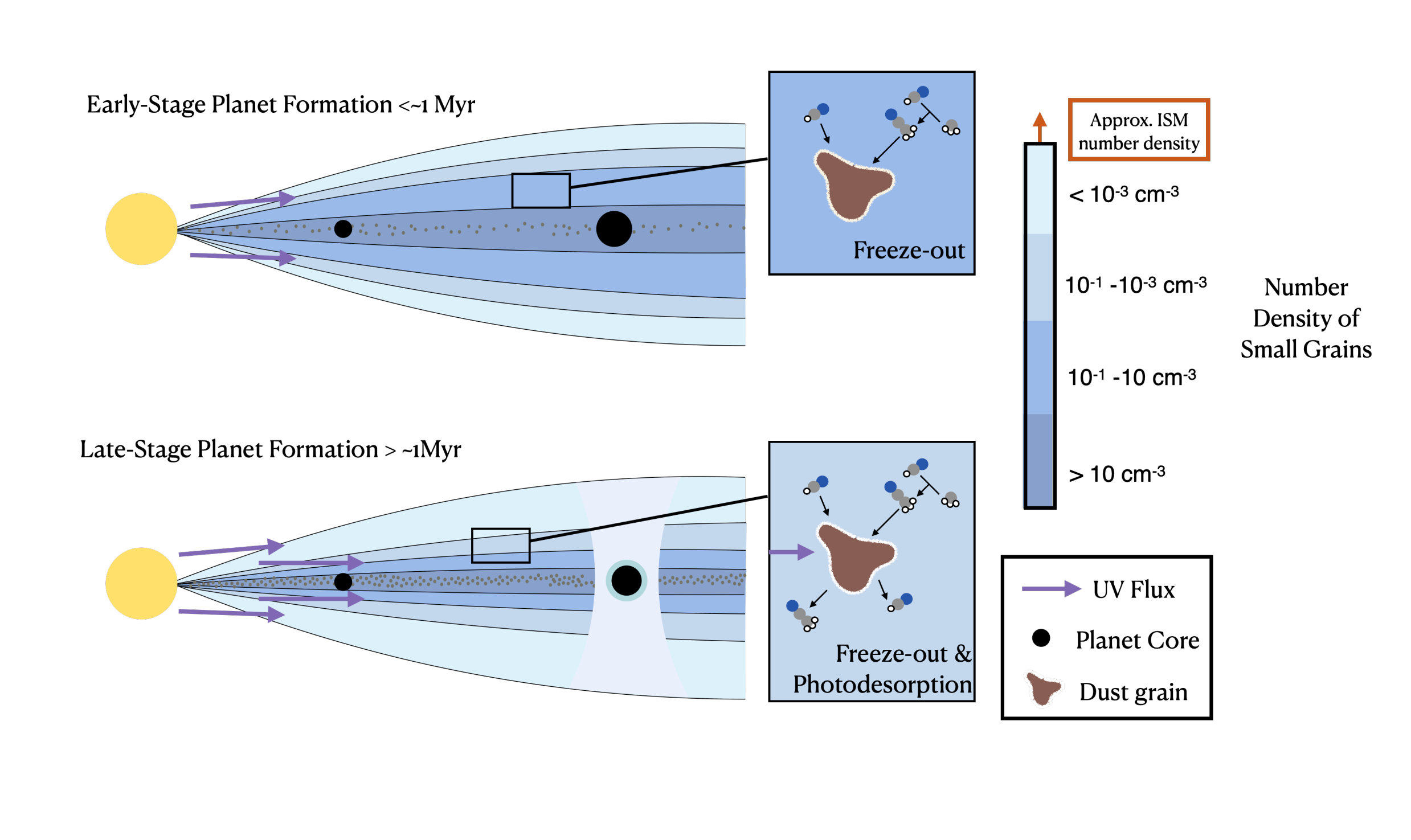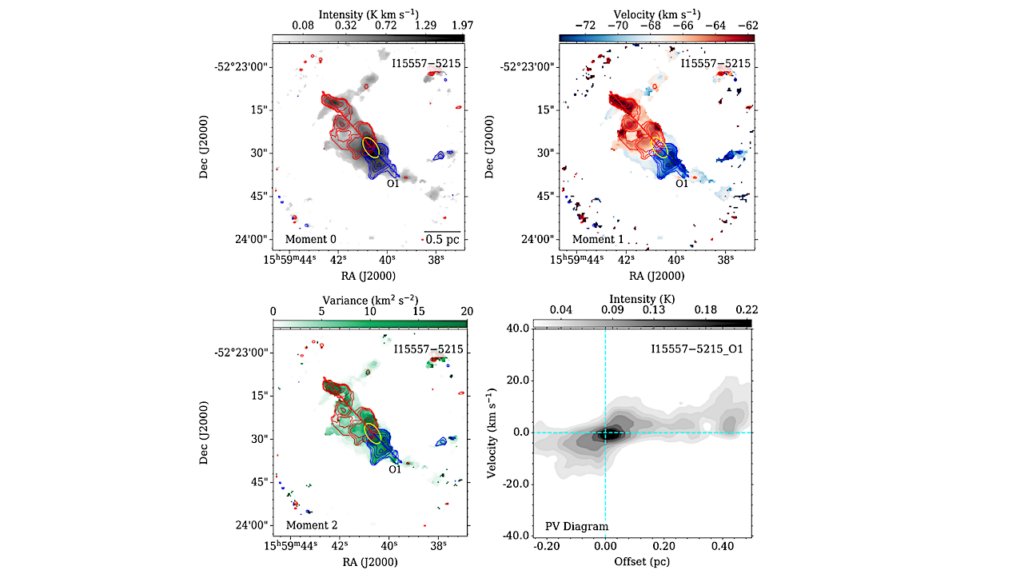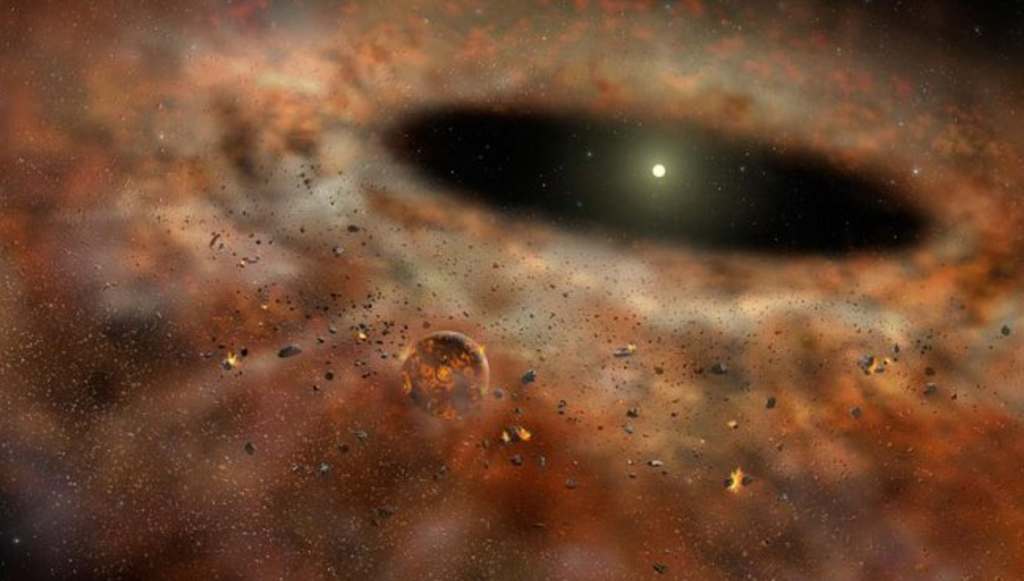UV-driven Chemistry As A Signpost For Late-Stage Planet Formation

The chemical reservoir within protoplanetary disks has a direct impact on planetary compositions and the potential for life.
A long-lived carbon-and nitrogen-rich chemistry at cold temperatures (<=50K) is observed within cold and evolved planet-forming disks.
This is evidenced by bright emission from small organic radicals in 1-10 Myr aged systems that would otherwise have frozen out onto grains within 1 Myr. We explain how the chemistry of a planet-forming disk evolves from a cosmic-ray/X-ray-dominated regime to an ultraviolet-dominated chemical equilibrium. This, in turn, will bring about a temporal transition in the chemical reservoir from which planets will accrete. This photochemical dominated gas phase chemistry develops as dust evolves via growth, settling and drift, and the small grain population is depleted from the disk atmosphere.
A higher gas-to-dust mass ratio allows for deeper penetration of ultraviolet photons is coupled with a carbon-rich gas (C/O > 1) to form carbon-bearing radicals and ions. This further results in gas phase formation of organic molecules, which then would be accreted by any actively forming planets present in the evolved disk.
Jenny K. Calahan, Edwin A. Bergin, Arthur D. Bosman, Evan Rich, Sean M. Andrews, Jennifer B. Bergner, L. Ilsedore Cleeves, Viviana V. Guzman, Jane Huang, John D. Ilee, Charles J. Law, Romane Le Gal, Karin I. Oberg, Richard Teague, Catherine Walsh, David J. Wilner, Ke Zhang
Comments: Accepted to Nature Astronomy, Published Dec 8th 2022
Subjects: Earth and Planetary Astrophysics (astro-ph.EP); Solar and Stellar Astrophysics (astro-ph.SR)
Cite as: arXiv:2212.05539 [astro-ph.EP] (or arXiv:2212.05539v1 [astro-ph.EP] for this version)
Submission history
From: Jenny Calahan
[v1] Sun, 11 Dec 2022 16:41:24 UTC (4,773 KB)
https://arxiv.org/abs/2212.05539
Astrobiology








